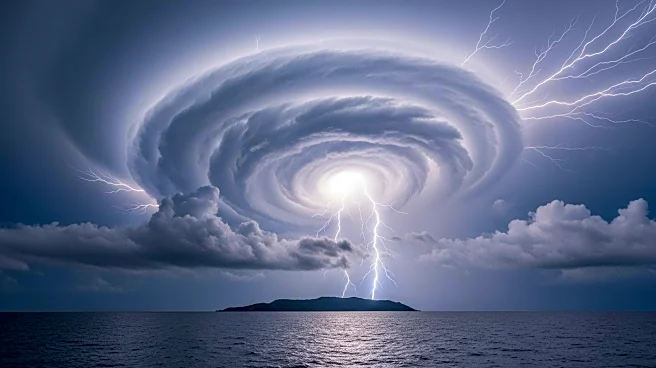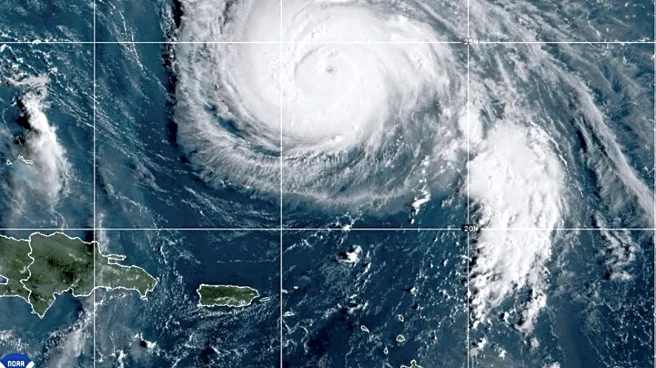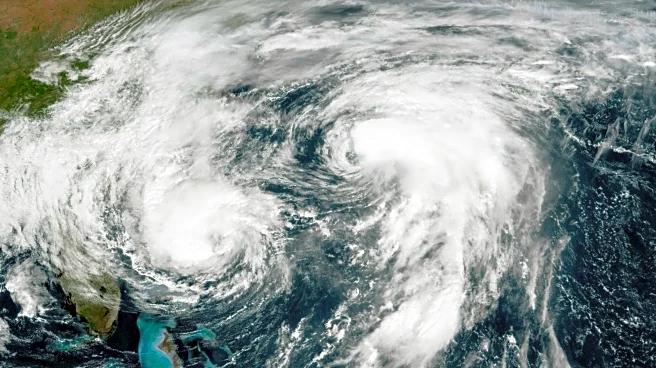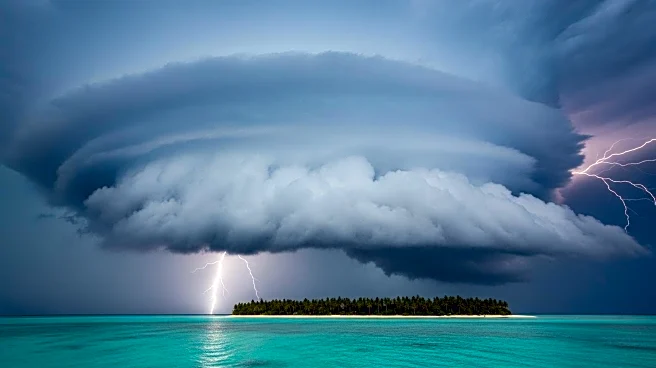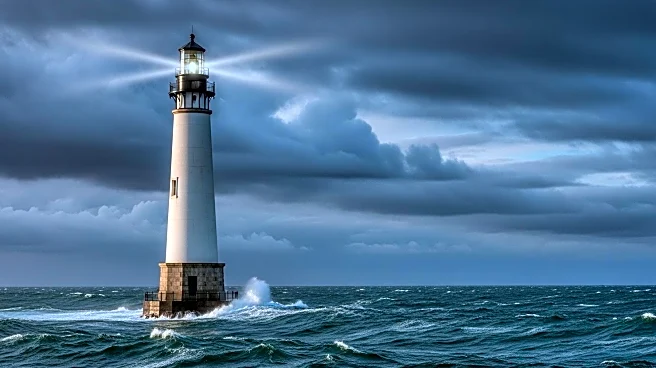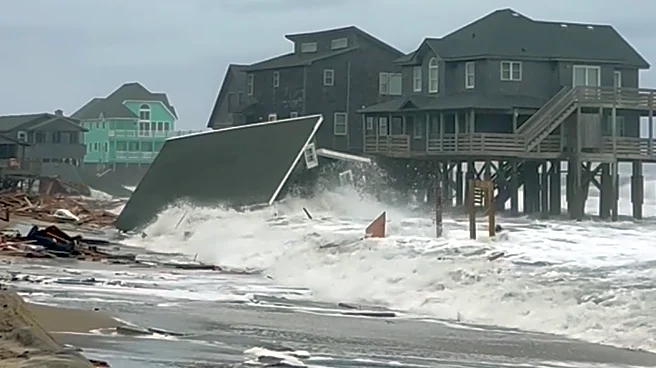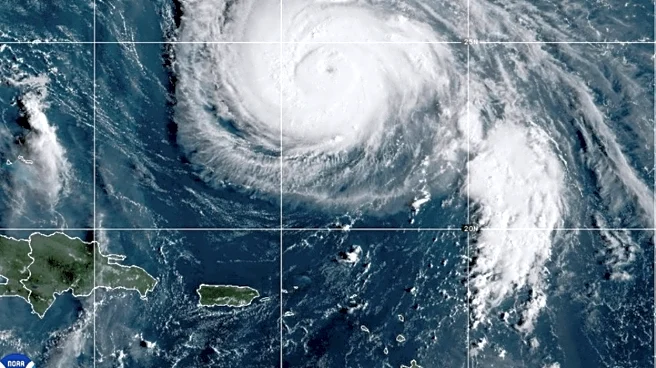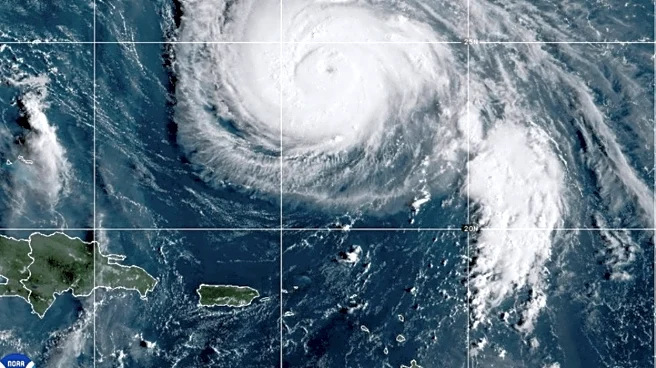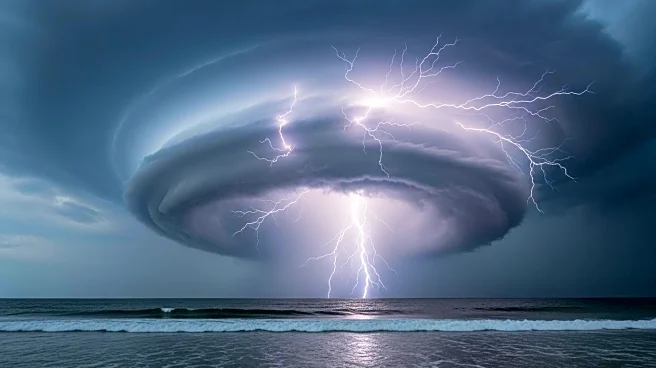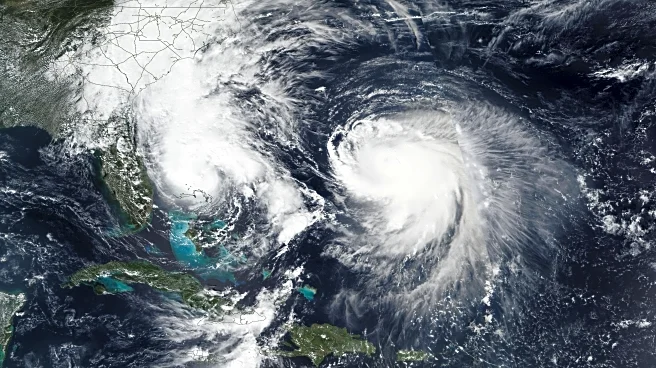What is the story about?
What's Happening?
Hurricane Imelda, the fourth hurricane of the 2025 Atlantic season, is expected to bring hurricane-force winds and damaging waves to Bermuda. Although not expected to make landfall in the U.S., the storm is causing swells and high surf along the U.S. East Coast, Bahamas, and Bermuda. In North Carolina's Outer Banks, strong waves have already caused the collapse of several homes. The storm, currently a Category 2 hurricane, is moving east-northeast and is expected to pass near Bermuda before weakening.
Why It's Important?
The impact of Hurricane Imelda underscores the ongoing threat of severe weather events in the Atlantic region. The storm's effects on the U.S. East Coast highlight the need for preparedness and resilience in coastal communities. The phenomenon known as the Fujiwhara effect, where two hurricanes interact, played a role in Imelda's path, demonstrating the complex dynamics of hurricane behavior. This event may prompt further research into hurricane interactions and influence future forecasting models.
What's Next?
As Imelda moves away from Bermuda, it is expected to weaken and become an extratropical low. However, the swells and rip currents generated by the storm will continue to affect the East Coast and other regions. Authorities may issue additional warnings and advisories to ensure public safety. The aftermath of the storm could lead to discussions on improving infrastructure and emergency response systems in affected areas.
Beyond the Headlines
The interaction between Imelda and Humberto through the Fujiwhara effect highlights the need for advanced meteorological research. Understanding such interactions could improve predictive models and enhance disaster preparedness. The event also raises questions about climate change's role in the frequency and intensity of hurricanes, potentially influencing future environmental policies.
AI Generated Content
Do you find this article useful?
